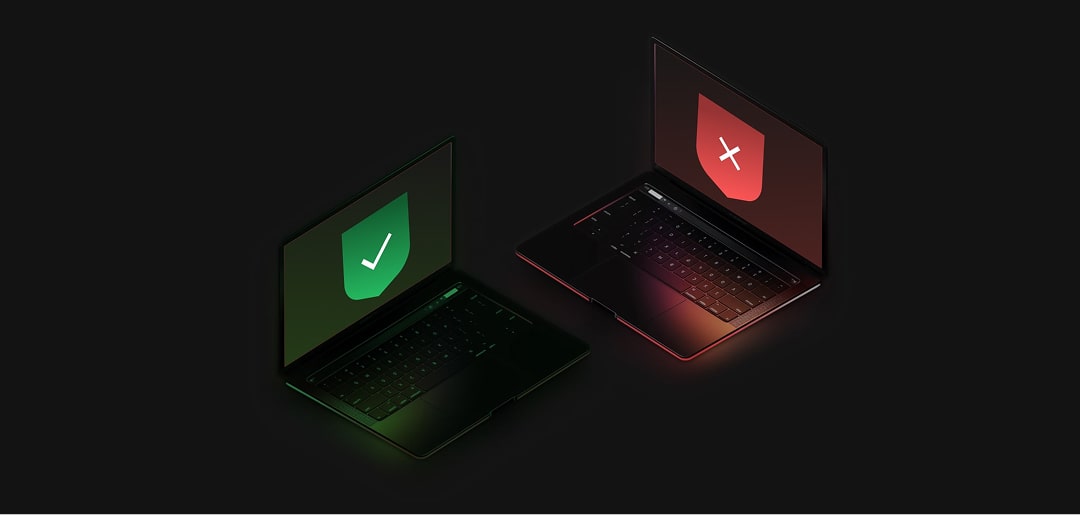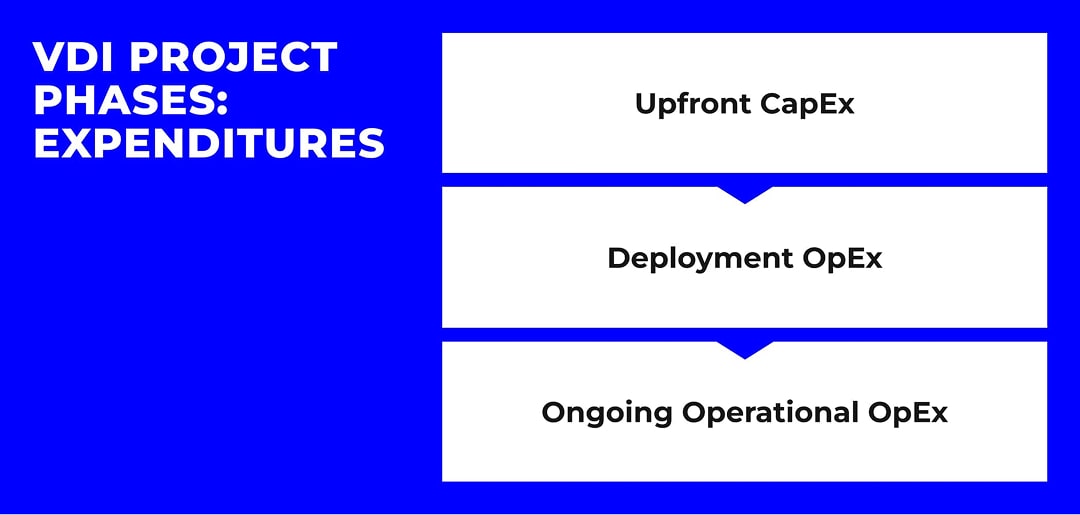Companies with 1-50 team members would rather hire remotely than increase office spaces, according to the report by OwlLabs. It’s not surprising, as remote tech hiring typically optimizes team maintenance and frees off resources for business development.
At the beginning of 2024, all small tech companies from our clients list opted for remote teams. Can they benefit from implementing virtual desktop infrastructure (VDI) for small businesses?
We’d like to briefly describe the pros and cons of VDI for small businesses to help small companies decide whether they need this tool or not.
Small Business VDI: Why to Consider?
Because VDI technology enables businesses to host desktop operating systems and applications on a centralized server.
Have you ever wondered how network clinics and banks manage their hardware? They have huge databases and numerous departments, but it doesn’t mean they buy powerful computers for each corporate system user. Instead of running software and storing data on individual physical devices, their specialists access virtual desktops remotely through thin clients, PCs, or mobile devices.
Think you cannot afford what large organizations can? New generations of VDIs can be developed much faster and cheaper than their predecessors. 24% of small businesses had implemented desktop virtualization by 2020. Exploiting virtual desktop infrastructure for small businesses doesn’t seem too resource-consuming anymore and can be a game-changer.
Benefits of VDI for Small Businesses
The following benefits can be interesting not only for remote teams, as VDI can help companies streamline a range of business ops.
Enhanced Security

Centralized management and control of desktop environments improve security by reducing the risk of data loss, malware infections, and unauthorized access. Most of the virtual desktop solutions for a small business offer advanced encryption, authentication, access control, etc.
Flexibility and Mobility
VDI enables all your team members to access their desktops and applications from any device connected to the internet. This flexibility enhances productivity and allows businesses to support remote work and BYOD (Bring Your Own Device) policies.
Scalability
A VDI for small businesses is great when you’re planning to scale tech teams, as it allows businesses to easily add or remove virtual desktops as needed. This scalability is ideal for growing businesses with fluctuating workloads.
Cost Savings
With a virtual desktop for small businesses, you don’t need expensive hardware upgrades. Since resources are centralized, you can save costs through lower energy consumption and longer hardware lifecycles.
Simplified IT administration
Virtual desktop management is centralized, so it simplifies IT administration tasks such as software updates, patch management, and troubleshooting. IT staff can focus on more crucial tasks.
Easy Team Management
Team members can quickly get answers to common HR questions or access HR services without leaving their virtual desktop environment, as an HR virtual assistant could be integrated into a VDI environment. Such assistants could also guide new hires through the onboarding process, provide access to training materials and resources, and help newcomers complete required paperwork or tasks.
How to Pick the Optimal VDI Solution
Assess Requirements
Before deploying a virtual desktop for small businesses, decide on:
The number of users;
Types of applications used;
Performance requirements like network bandwidth, storage performance, and server resources.
The performance of a small business VDI depends on how to set up VDI desktop. Picking the right VDI platform, skillful installation and testing — all of those steps are parts of a VDI set-up plan.
The installation processes are different for on-prem VDI and cloud-based solutions, which are typically called Desktop as a service (DaaS).
VDI vs. DaaS
Hosting
OS hosted in an on-premises data center. You cannot start a business without an office space.
OS hosted by a cloud service provider. You can start a business without an office space.
Maintenance
IT department handles desktop maintenance, security, network, and storage resources.
Provider handles desktop maintenance, security, network, and storage resources.
Pricing
A perpetual license per user plus investments in infrastructure.
Subscription model, usually per user, per month.
VDI is a proven tool which appeared more than 20 years ago. You can opt for it as an on-premises solution to get more control over your virtual desktop management.
Yet, VDI’s “younger brother”, DaaS, is a more accessible way to implement a VDI for small businesses because:
DaaS is a good option when your team lacks expertise to set up things like Citrix, VMware, networking, and security systems. In such a case, managing server resources becomes challenging and a virtual desktop for a small business can become vulnerable to security breaches.
DaaS doesn’t require huge investments in office space and hardware, so it could be easier to achieve your business goals faster.
Consider Various VDI Platforms
Selecting the best VDI software for your case is crucial for the success of VDI implementation.
VDI Checklist
Scalability
Security and compliance with industry standards
Management capabilities
24/7 support from your VDI solution provider
Application responsiveness
Graphics performance
Network latency
AI options
Cost
Integration with existing systems.
We’ve compared the top 6 VDI platforms to help you outline the most suitable for small companies.
Citrix Virtual Apps & Desktop
On-prem or cloud / Windows / Windows, Linux, Mac etc.
Robust architecture, excellent graphics, centralized apps and desktops, high-definition virtualization experience, full visibility and administrative control, easy integration with other apps.
Relatively high pricing and complex licensing, difficulty in loading and integration with certain apps, glitches on mobile devices.
VMWare Horizon
On-prem or cloud / Windows, Linux / Windows, Linux, Mac, etc.
Flexibility, unified management, on-premise, cloud, or hybrid deployment options.
Licensing complexity, connectivity issues.
Oracle VirtualBox
On-prem / Windows, Linux, Mac, etc. / Windows, Linux, Mac, etc.
Open-source, lightweight
Limited scalability for large enterprises.
Amazon WorkSpace (AWS)
Cloud / Windows, Linux / Windows, Linux, Mac, etc.
Unlimited scalability, shared or dedicated desktop options, secure access from any device.
Cost may vary based on usage.
V2 Cloud
Cloud / Windows / Windows, Mac, Linux, etc.
Easy remote access, high level of security, flat pricing.
Not suitable for organizations with complex requirements.
Microsoft Azure
Cloud / Windows / Windows, Linux, Mac, etc.
Infinitely continuous backup and data capacity.
Complex licensing and management, integration challenges.
On our clients’ demand, we can provide VDI on AWS for the tech specialists we hire. In case a client’s team uses any other VDI, we add new users to the client’s existing virtual environment.
Calculate Total Cost of Ownership (TCO)
A comprehensive TCO analysis can help determine the long-term value of VDI for your business. You need to understand 2 things:
How much your VDI solution of choice will cost for your use case?
Is allocating of this budget currently available?
According to the white paper by Workspot, TCO consists of costs necessary for each VDI project stage and potential cost savings.

1. Upfront CapEx. What to buy to start a VDI project?
A bunch of things. Yet, you can reduce upfront CapEx by up to 95% and TCO by up to 50% with DaaS, as you have to pay only for VDI licenses.
Upfront CapEx
Load balancer & VPN Gateway
Broker software
Microsoft Windows Server and SQL databases
Portal / enterprise storefront software
Configuration / Monitoring software
Image Management software
VDI licenses
Hypervisor host license
Server & Storage Hardware
Storage management software
—
2. Deployment OpEx. What does rolling out a VDI project include?
Deployment OpEx
Running a proof of concept
Adapting the infrastructure for user needs
Acquiring hardware and software
Standing up an environment
Provisioning users
Set up
Users training
3. Ongoing Operating OpEx. What is the cost to serve your VDi?
Ongoing Operating OpEx
VDI support typically requires a team of specialists as different issues, patches, and changes refer to different areas of expertise.
VDI licenses
Design the Infrastructure
If you decide to build an on-prem VDI, it’s especially important to determine the most matching hardware and software components needed to support your VDI deployment.
Test and Optimize
It’s okay if your VDI solution is not 100% optimal on the first try. Test the VDI environment to figure out if it’s reliable and secure. Thus, you can fine-tune the system and improve its performance.
VDI is About Globalization and Systemic Approach
So, is it a worthy thing to invest in virtual desktops for a small business? If configured correctly and implemented on time, modern VDIs offer:
Cost-effective, flexible, and secure solutions for managing desktop environments;
An opportunity to easily hire specialists globally, overcoming talent shortages and reducing costs associated with hiring.
VDI, as well as outstaffing, removes geographical barriers and frees up more time for your core business. If you need that, consider implementing VDI and remember that you can rely on our HR services when building an international tech team.
FAQ
What is the difference between virtual computer and VDI?
VDI and virtual computers or virtual machines (VMs) are 2 different software emulation technologies. VMs let you use different operating systems on one physical server by creating virtual hardware. It becomes possible to exploit one computer as if having more computers. VDI lets people use a virtual desktop hosted on a server in a data center. Roughly speaking, VDI consists of numerous VMs and connection brokers. Many users can exploit the computing capacity of one computer.
What is a virtual desktop infrastructure (VDI)?
Virtual Desktop Infrastructure (VDI) is a desktop virtualization technology. It allows users to access a desktop environment, typically Microsoft Windows with certain installed apps, while this desktop operating system runs and is managed in a data center. So, users don’t need powerful hardware, as they don’t have to run apps and store data on their local devices.
What are the disadvantages of VDI?
Virtualization is completely dependent on network quality. This “disadvantage” is not crucial if you hire, for instance with us, in the regions with well-developed internet infrastructure. And we are sure that hiring in such regions is a must-have for software development projects, whether they use VDI or not.
Ann Kuss is the CEO at Outstaff Your Team. After 11 years of expertise in building remote tech teams for startup unicorns and global tech brands, Ann decided to lead a new venture aiming to reinvent the way international tech teams scale. Throughout her career, Ann hired specialists for countless tech positions from more than 17 countries on all major continents. Ann graduated from Kyiv-Mohyla business school, is an MIM Kyiv alumna, and regularly takes part in mentorship programs for junior tech talents. Ann actively promotes knowledge sharing and curates Outstaff Your Team blog strategy, preferring topics that solve practical needs of IT leaders. She believes that structuring business flows (including hiring) is a well-planned journey with predictable and successful outcome.




